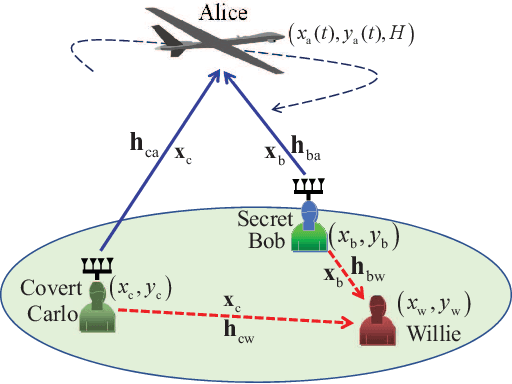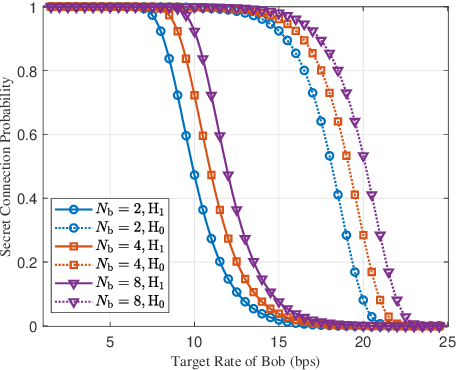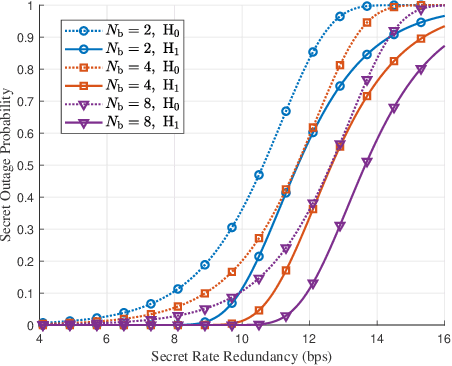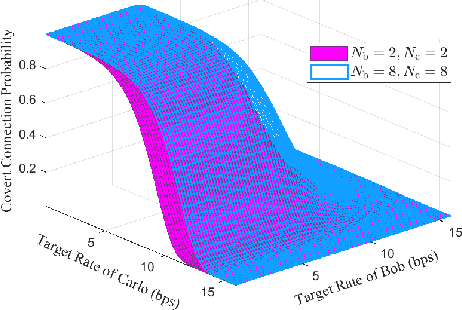Collaborative Secret and Covert Communications for Multi-User Multi-Antenna Uplink UAV Systems: Design and Optimization
Paper and Code
Jul 08, 2024



Motivated by diverse secure requirements of multi-user in UAV systems, we propose a collaborative secret and covert transmission method for multi-antenna ground users to unmanned aerial vehicle (UAV) communications. Specifically, based on the power domain non-orthogonal multiple access (NOMA), two ground users with distinct security requirements, named Bob and Carlo, superimpose their signals and transmit the combined signal to the UAV named Alice. An adversary Willie attempts to simultaneously eavesdrop Bob's confidential message and detect whether Carlo is transmitting or not. We derive close-form expressions of the secrecy connection probability (SCP) and the covert connection probability (CCP) to evaluate the link reliability for wiretap and covert transmissions, respectively. Furthermore, we bound the secrecy outage probability (SOP) from Bob to Alice and the detection error probability (DEP) of Willie to evaluate the link security for wiretap and covert transmissions, respectively. To characterize the theoretical benchmark of the above model, we formulate a weighted multi-objective optimization problem to maximize the average of secret and covert transmission rates subject to constraints SOP, DEP, the beamformers of Bob and Carlo, and UAV trajectory parameters. To solve the optimization problem, we propose an iterative optimization algorithm using successive convex approximation and block coordinate descent (SCA-BCD) methods. Our results reveal the influence of design parameters of the system on the wiretap and covert rates, analytically and numerically. In summary, our study fills the gaps in joint secret and covert transmission for multi-user multi-antenna uplink UAV communications and provides insights to construct such systems.
 Add to Chrome
Add to Chrome Add to Firefox
Add to Firefox Add to Edge
Add to Edge